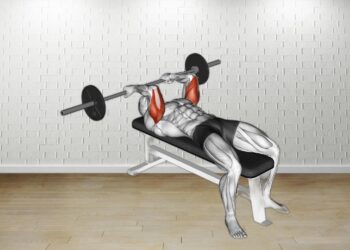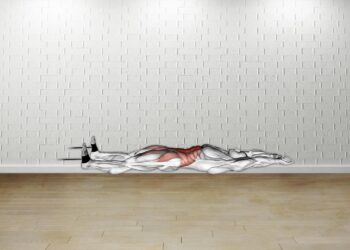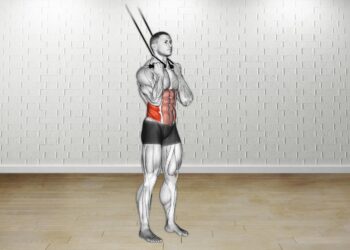The machine fly is an effective chest isolation exercise which is great for building muscle and strength. Now, this is a safe exercise for anyone when using proper form and it’s a great tool for thoroughly isolating each pec muscle since you’re developing more stabilizer muscles during the exercise.
But, you want to make sure you’re doing it properly if you want to get results. You see, many people overstretch during this exercise and it’s not necessary. A slight stretch in combination with a strong concentric (Positive) movement will yield the best results possible and it won’t limit your strength potential during the exercise.
The machine fly is a must in any chest routine so don’t miss out on its effectiveness.
What is a Machine Fly?
The Machine Fly is designed to isolate and target the chest muscles, specifically the pectorals. Unlike other exercises which might require balance or the engagement of other stabilizing muscles, the Machine Fly provides an effective and isolated workout for the chest muscles.
- Target Muscle Group: Pectoralis Major
- Type: Strength
- Mechanics: Isolation
- Equipment: Chest fly machine
- Difficulty: Beginner
How to Do Chest Fly Machine
Proper Technique for the Machine Chest Fly
Setting up the Machine:
- Adjust the seat pad: Begin by tweaking the seat pad height. Ensure that when you sit, the handles align with your chest, allowing your feet to rest comfortably on the floor. The back pad should provide adequate support for your spine.
- Check your arm position: Extend your arms to the sides to grip the handles, ensuring your elbows and wrists align with your shoulders. Your arms should be parallel to the front of your chest and not trail behind your body. Maintain a slight bend in your elbows throughout the movement. Depending on the machine, you might be able to adjust the arm levers to suit your arm length.
- Choose a weight: For newcomers, select a weight that feels slightly easy, allowing you to familiarize yourself with the motion. As you gain experience and strength, this can be adjusted accordingly.
Performing the Exercise:
- Assume the proper posture: Sit upright, ensuring your neck and shoulders are relaxed. Place your feet flat on the floor.
- Grip the handles: Some machines come equipped with a foot bar to release the handles. If so, use this to position the handles forward. Your palms should face outward as you grip.
- Execute the movement: Envision your arms behaving like butterfly wings. Gently press them together in a controlled motion. As they meet, your elbows should have a soft bend, and your wrists should remain relaxed.
- Pause and return: Once your arms come together in front of your chest, pause briefly. Gradually return to the starting position, ensuring your chest opens up and your posture remains robust and erect.
Repetition and Progression:
- Start with two sets of 7 to 10 reps. Allow for a brief rest between each set.
- As you progress, consider adding 1 to 5 additional reps per set. Introducing a third set can also be beneficial.
- If you’re able to finish all reps without fatigue, increment the weight and reps. The final set should be challenging but still feasible to complete with correct form.
Benefits of Machine Fly
The pectoral region houses the pectoralis major and pectoralis minor. The Machine Fly primarily targets the pectoralis major, vital for shoulder joint movements. The benefits of this exercise extend to daily activities. Due to its seated nature, it’s particularly suitable for beginners. The Machine Fly aids in building lean body mass, increasing bone density, and boosting the base metabolic rate.
Level Up Your Fitness: Join our 💪 strong community in Fitness Volt Newsletter. Get daily inspiration, expert-backed workouts, nutrition tips, the latest in strength sports, and the support you need to reach your goals. Subscribe for free!
Variations of Machine Fly
- Chest Fly Machine vs. Pec Deck: While the Machine Fly emphasizes a stretched position with straight elbows and a non-externally rotated humerus, the Pec Deck allows for a more intense squeeze in the closed position. The Pec Deck’s design lets the elbows come closer together, targeting inner chest muscle fibers more effectively, and potentially leading to enhanced muscle growth.
- Modifications for Hand Injuries: Some versions of the machine feature elbow pads, offering an alternative for those with wrist or hand issues.
- Add the Abdominals: Using one arm at a time can bring the abdominal muscles, especially the obliques, into play.
Tips for Safe and Effective Machine Fly
Maintain proper form: Always keep your back flat against the machine. Steady your breath – exhale as you close and inhale as you open.
Gradually increase weight and difficulty: Start light, focusing on form. With time, add more weight and repetitions. Challenges are good, but form is paramount.
Level Up Your Fitness: Join our 💪 strong community in Fitness Volt Newsletter. Get daily inspiration, expert-backed workouts, nutrition tips, the latest in strength sports, and the support you need to reach your goals. Subscribe for free!
Listen to your body: Sharp pains, especially in the shoulders or wrists, indicate a need for adjustment or consultation.
Common Mistakes to Avoid
- Holding Your Breath: Breathe normally for lighter weights.
- Using Your Legs: The focus is on the chest, not legs.
- Arching Your Back: This can lead to injury.
- Using Momentum: Slow, deliberate movements are key.
FAQ’s
Is the Machine Fly suitable for beginners?
Yes, its design is particularly beginner-friendly.
How does the Machine Fly differ from the Pec Deck?
The main difference lies in the range of motion and the muscles emphasized. The Machine Fly provides a significant stretch in the open position, while the Pec Deck focuses on contraction in the closed position.
Conclusion
The Machine Chest Fly is a cornerstone for chest development. Right technique and awareness ensure maximum benefits.
Interested in measuring your progress? Check out our strength standards for Machine Chest Fly.








